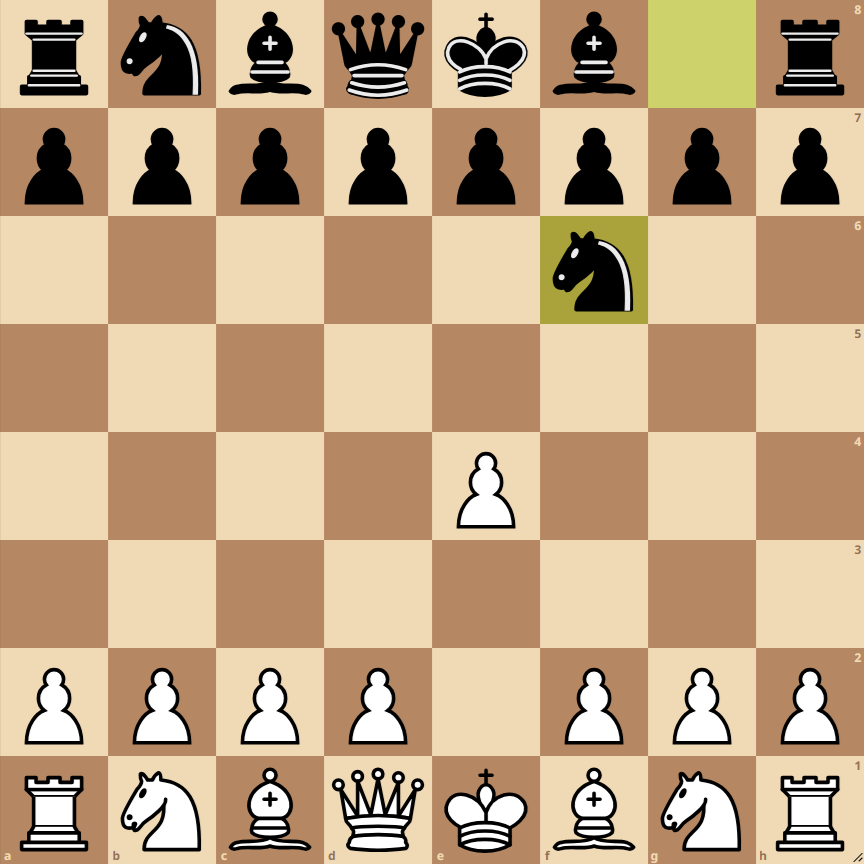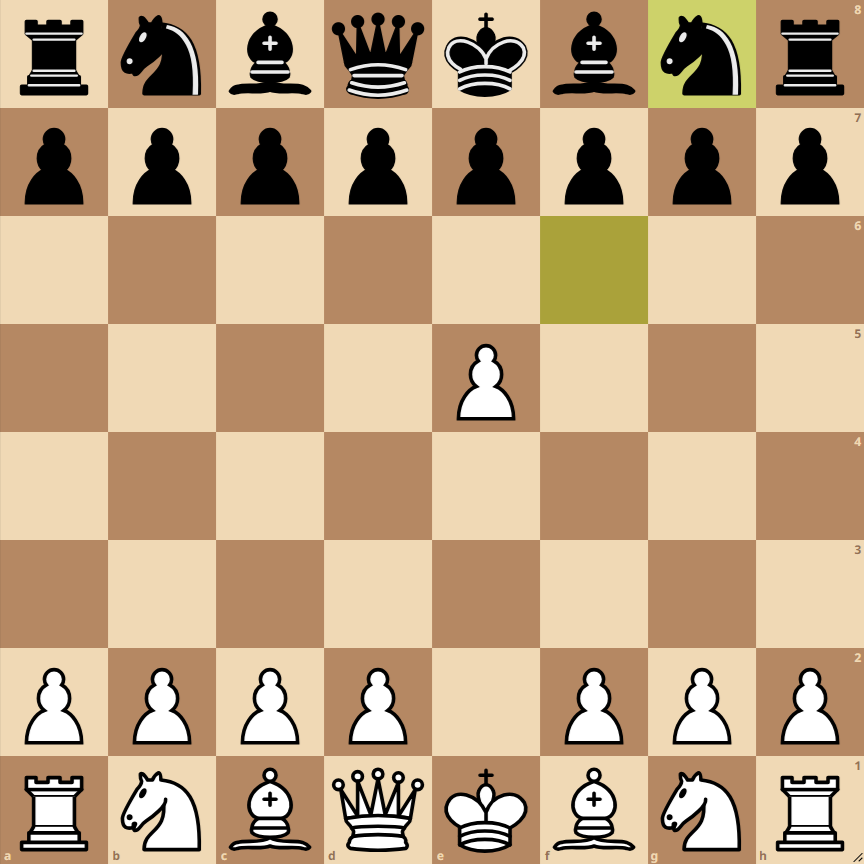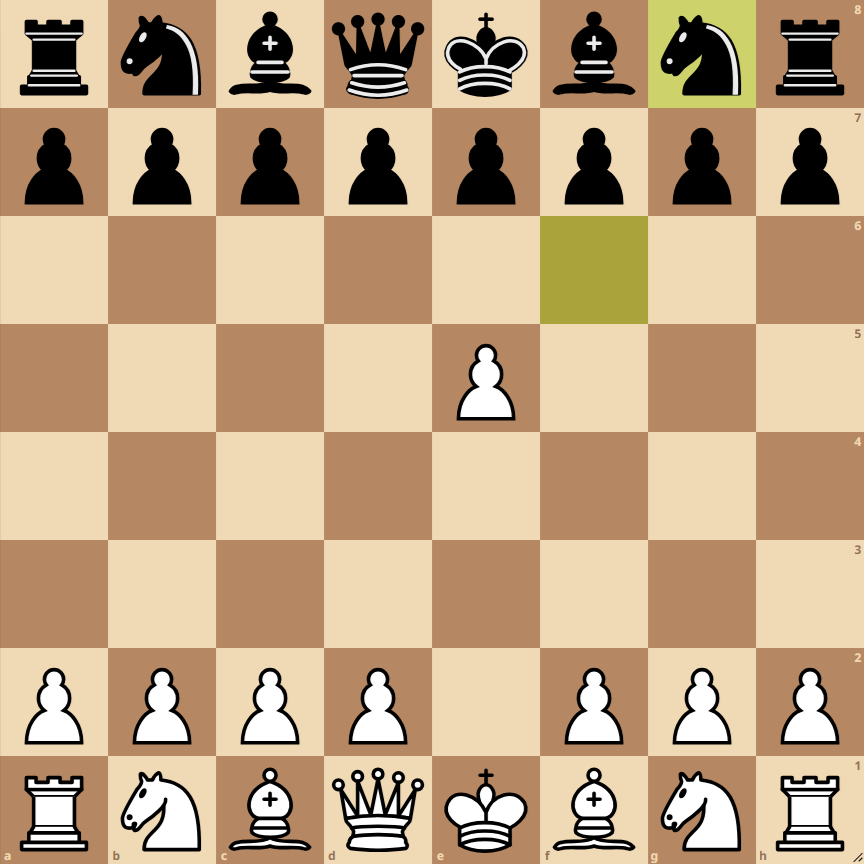How to Play the Alekhine Defense Brooklyn Variation


The Alekhine Defense, Brooklyn Variation, is an unconventional opening in chess. It is characterized by initial moves that aim to unbalance and confuse the opponent from the beginning. Below are the specific moves of this opening:
- 1. e4: White advances their king’s pawn two squares. This is a classic move that controls the center and opens lines for the bishop and queen.
- 1… Nf6: Black responds by moving their knight to the f6 square. This move challenges the center controlled by white and prepares the ground for future actions.
- 2. e5: White advances their pawn one more square, threatening the black knight and aiming to gain space in the center.
- 2… Ng8: An unusual move and a distinctive part of the Brooklyn Variation. The black knight returns to its original position, a move that may seem passive but aims to divert white’s pieces from their normal development.
Variations of the Alekhine Defense Brooklyn Variation
Modern Variation
In the Modern Variation, black plays more standard moves after 1… Nf6, such as d5, aiming to counteract the center of white in a more direct way.
Classic Variation
In this variation, black may choose to develop other pieces like the bishop or queen early, instead of retreating the knight to g8, leading to a more dynamic and centralized game.
Exchange Variation
It is characterized by the early exchange of pawns in the center, which can lead to a more open and tactical game from the beginning.

